A little time trip in the tradition of the majolica of Laterza. We visit the Museum of Majolica (MuMa) and know the history of this precious Apulian production.
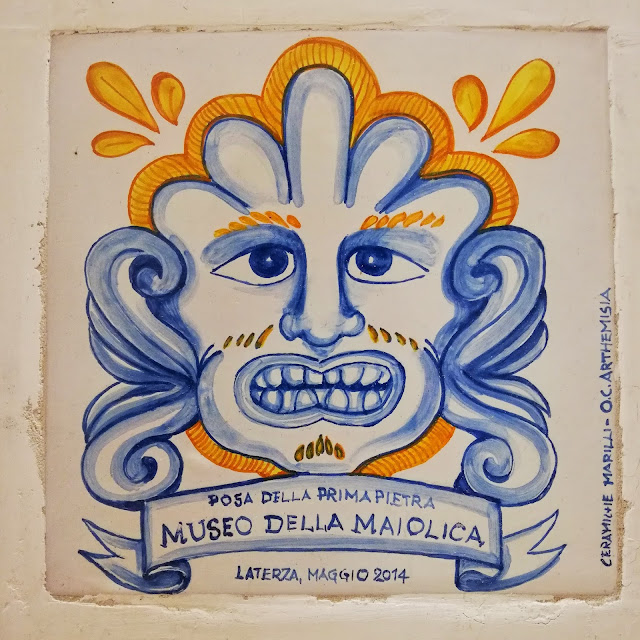
What comes into your mind if I talk about Apulian craftsmanship? Ok, the ceramics from Grottaglie, but do you know that Apulia stood out for another production that was appreciated all around the world? Yes, always in the province of Taranto, in the town of Laterza, ceramic artists were specialized in the production of majolica.
The majolica of Laterza had its maximum development in the 17th, 18th and 19th centuries, then, unfortunately, slowly disappeared because of the decreasing request of these objects with baroque decorations. Nowadays, the heritage of Laterza has been revalued thanks to Riccardo Tondolo, who recovered the pieces spread all around the world. Now those pieces are kept in the Museo delle Maioliche (the museum of majolica) of Laterza, the MuMa. I’ll be honest and declare my ignorance about the existence of this artisan tradition and, as soon as I knew about the presence of a museum that keeps its memory alive, I booked a visit.
What is majolica?
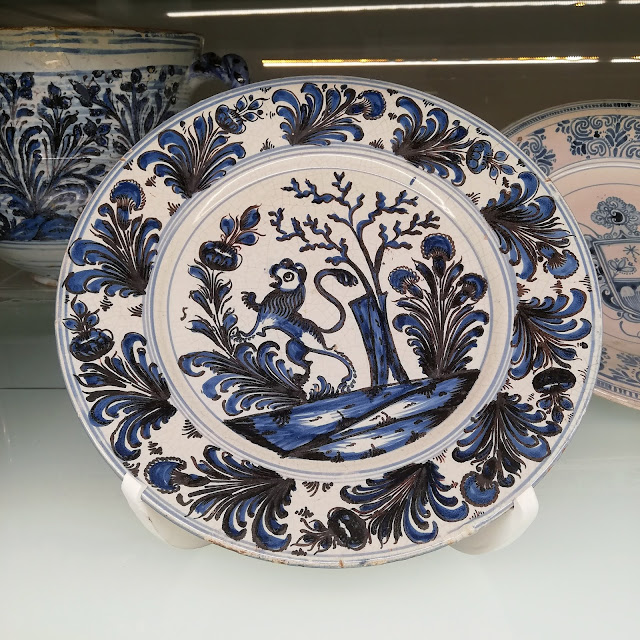
Majolica is a kind of processing ceramic coated with a tin-based enamel. As an Apulian woman, curious about her own traditions, the first thing that I wondered was what made it different from ceramic from Grottaglie (except for decorations, obviously). The difference is in the quality: ceramic was for the populace; majolica was thinner, precious, expensive and meant for the rich and the noble. Actually, the examples of majolica of Laterza that are in the MuMa are mostly decorative plates, founts, all richly decorated and of evident elegance.
The majolica of the MuMa
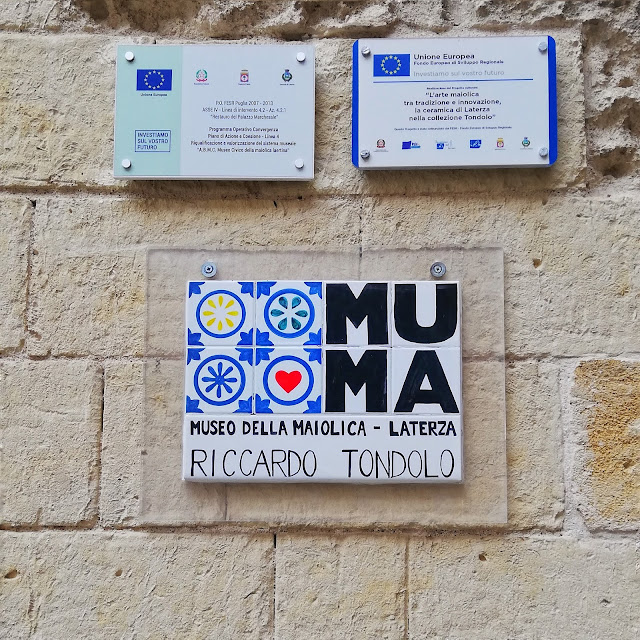
Our guide, Nicola, accompanies us through the court of the Palazzo Marchesale, along a staircase to reach the hall dedicated to the exposition. The majolica of Laterza stood out in the world especially for its turquoise decorations on white background. They think that the choice of this colour and its almost exclusive usage recalled the blue blood of noble clients. We dwell on the first big decorative plates: the represented scenes show chivalric settings, with fairy-tale landscapes. The plate in front of me, actually, shows a moment from L’Orlando Furioso. But the eye is caught by something more elaborated, the brim of these plates: an intricate blue embroidery made of geometric elements, spirals and flowers, but not any flowers, local flowers, so peonies, orchids, daisies.
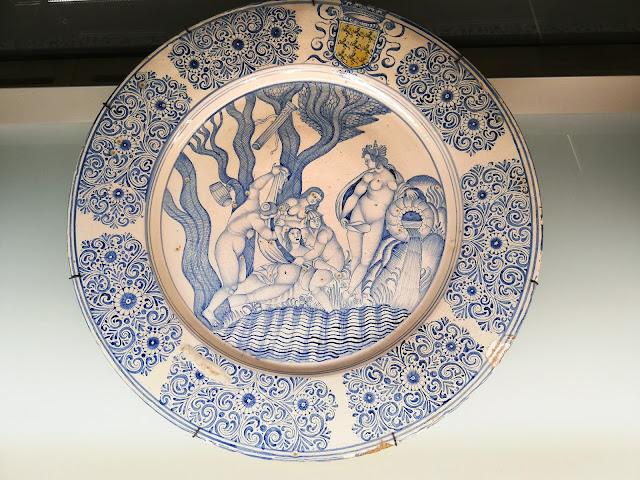
The objects kept in the MuMa date back to the 17th until the 19th century, the golden age of the majolica of Laterza. I walk among the showcases and don’t see just beautiful objects, but a slice of the time when plates, albarellos (a container where they stored medicinal herbs. Perhaps you can still see them in some pharmacies as a decorative element), objects with peculiar shapes and plates showing people, a sort of little portraits. Here a fish-shaped jug, ladies that reciprocate my look from plates, shell-shaped basins used by the Marquis of Laterza for his toilette.

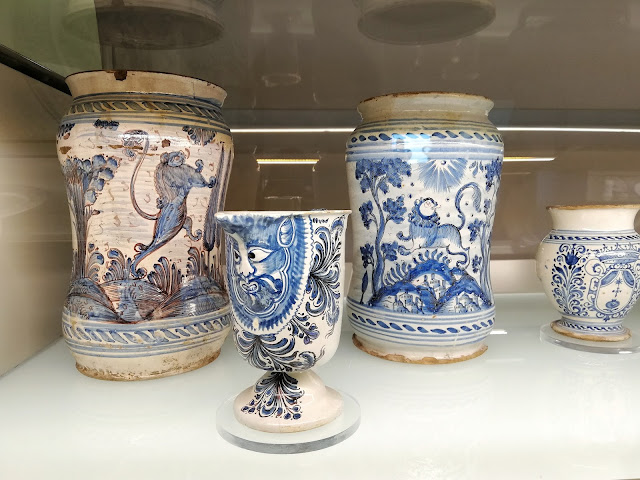
A showcase in particular stands out among the others: the borders of the plates become yellow, the figures are more oriental, there are also a teapot and a little tea cup. They’re the objects that date back to the moment when Oriental taste started to spread and also the ceramic artists of Laterza adapted to the requests of that period.

Then, there’s a showcase that, more than the others, attracts my curiosity. Inside there are some book-shaped containers: hand warmers, Nicola says. They were filled with hot water and then you simply hold them in your hands. Maybe it’s because I suffer a lot during winter with my cold hands that these objects attracted me so naturally from the beginning.

Finally, last but not least, the showcase that keeps some treasures for the community of Laterza: the one that keeps the originals of some elements that once were in the crypt of Mater Domini, in the sanctuary of the town. There are two heads with a potbelly body decorated with green rhombuses that represent dragon scales. In the crypt of the sanctuary, their copies are on the sides of the fresco of Mater Domini to stand guard, to protect it from evil and misfortune. In the same showcase there’s also a small painting that in the 70s was stolen. Nowadays, it’s been recovered and kept safe in the museum. There’s a copy of it in the crypt of Mater Domini, too.


The majolica of Laterza today
Nowadays the production of the majolica of Laterza is back in vogue , even though the ceramic artists are still few for a place with a so old and valuable tradition. A piece in the museum celebrates the new generation of ceramic artists: a plate mixes traditional decorative patterns with subjects of the present time, that denounce the evils of modern society and of our land, as for example the ex-Ilva of Taranto. Finding a recent item among those of past centuries is like seeing a bridge between past and present, as if the ceramic artists who made the history of the majolica of Laterza passed the torch to their modern heirs.

Why should you visit the museum?
The MuMa is the witness of a refined artisanal tradition in Apulia, at the moment surpassed by the best known ceramics of Grottaglie. I always say that traditions talk about the people of a particular place, of the history, of the economy and, in this case, of the aesthetic taste that characterized it. Visiting the Museum of Majolica means to dive in the period of the Marquis of Laterza, it’s a little time trip in the noble society of that period.

Useful information
The Musem of Majolica is placed in the Palazzo Marchesale of Laterza, in Piazza Plebiscito and you can visit it every day, but Monday, from h. 10,00 to h. 13,00 and from h.17,00 to h. 19,00.
The ticket costs € 3,00.
I highly recommend to book a guided visit, for which there’s a little additional cost on the ticket, writing at the e-mail address chiavedivoltacoop@gmail.com or calling the number +39 333 57 26 138.
Now, tell me, what comes into your mind if I talk about Apulian craftsmanship?

Commenti
Posta un commento
Feel free to leave a comment!
I would be glad to know your opinion! ;)
Thank you! :)